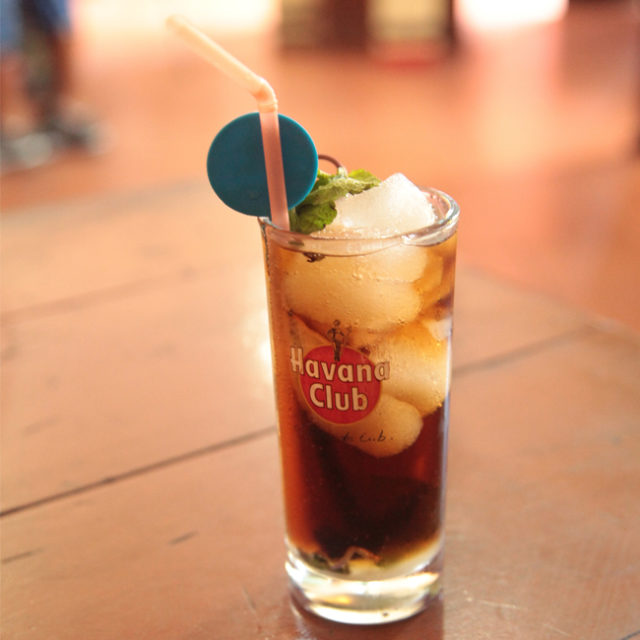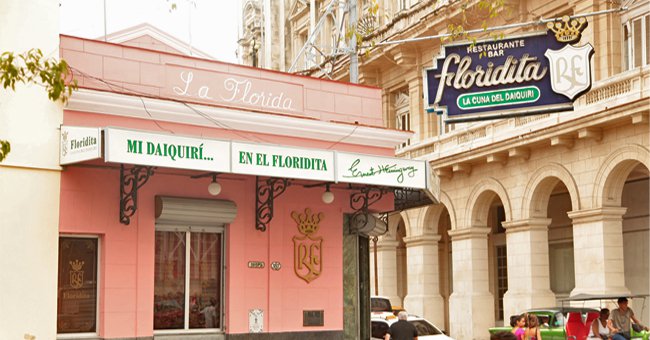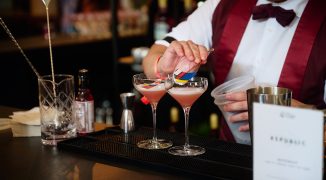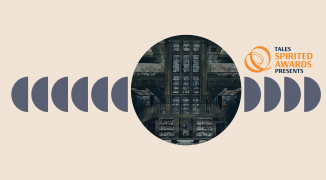It’s 5 o’clock on a Friday afternoon, and I’m standing in front of the terrace at Havana’s Hotel Inglaterra, huddling hunch-backed, along with so many locals, peering into my phone. The hotel is one of a growing number of places in the Cuban capital where those with a few CUC (one of two local currencies, and the one with a greater value) to spare can connect to WiFi after buying an Internet access card.
“Mojito, lady? Daiquiri? Cuba Libre?” asks a waiter dressed in a crisp, white guayabera, his hand gesturing invitingly to a table on the terrace, where a quintet is playing its usual set of songs, all made famous by Buena Vista Social Club. It is the perfect picture of the Cuban vacation fantasy made real. I shake my head. It’s a blistering afternoon in Havana and it’s easy to understand how so many passersby — Americans, Canadians, and Germans, mainly — are enticed to cradle a cool highball or Collins glass in their hands, swirling fresh mint leaves around and around with a Havana Club swizzle stick, which at least some of them will surely pocket as a souvenir of their Cuba trip.
What I’m looking for, however, is something different. As many Americans wring their hands worriedly — will Starbucks and McDonald’s soon pop up on every corner of Havana as U.S.-Cuba relations normalize after nearly 60 years? — I’m preoccupied by a different question: Will Cuba’s cocktail culture change?
The truth is, I’m hoping it will. It seems impossible to escape the trio of classic but cliched cocktails, with every hotel, bar, and restaurant peddling the drinks made most famous by the American writer, Ernest Hemingway. There’s a well-worn trail trodden by tourists who want to walk in Papa’s footsteps, drinking daiquiris, as he did, at Floridita, just a few minutes’ walk from the Inglaterra and mojitos at La Bodeguita del Medio. But where do you go if you want a taste of the new Cuban cocktail culture?
 Havana Club trumpets Cuba’s capital as a cocktail mecca, but it seems like tradition and preservation are prevailing over innovation.
Havana Club trumpets Cuba’s capital as a cocktail mecca, but it seems like tradition and preservation are prevailing over innovation.
A week later, I’m not sure I’m any closer to the answer. There is more liquor here than I’ve seen on any of my previous visits over the past decade. On the shelves at the supermarket in my mother-in-law’s Centro Habana neighborhood I see tequila, whisky, vodka, and a dizzying array of mixers, in addition to local rums, among them Havana Club and Ron Caney. The prices are out of reach for most Cubans, Don Julio, for instance, costing more than several months’ worth of wages, which may be why so many bottles have a fine coat of dust on them. It’s not clear, exactly, who’s buying the imports or how they’re using them. And they’re not well-represented at any of the two dozen or so bars, restaurants, and paladares I’ve visited. “Cocktail menu?” I ask hopefully at each, only to be handed a faux-leather folio listing the usual suspects and spirits served straight, on the rocks, nothing more.
In fact, there’s quite a bit happening to suggest that instead of striving to become the next great go-to city for contemporary cocktails, Havana would rather rest on and protect her libational laurels. A vice-president of the Havana Culinary Association talks to me about how important it is to preserve culinary and cocktail traditions, and explains that this is the reason for a new cultural-culinary event series the Association is launching this month. She directs me to the capital’s Club de Cantineros (Bartenders’ Club), where, I discover, similar concerns are motivating an instructor who is imparting classes on traditional Cuban cocktails. There are no small-batch spirits or creative garnishes, no edgy techniques, like infusing cigar smoke into a drink, and there’s almost no evidence the countries that have had close relationships with Cuba during the past half-century — chief among them, the Soviet Union and China — have had any sort of lasting impact on the Cuban cocktail repertoire.
Havana Club describes the city as a “cocktail mecca,” citing as evidence the International Cocktail Grand Prix it has hosted every other year since 1996. But as Cuba’s best-known rum manufacturer, the moniker seems little more than a marketing ploy, and a week into my explorations of contemporary drink culture in the Cuban capital and years into my deep dive into Cuban culinary and cocktail history, I’m unconvinced. If Americans are worried about the creeping influence of their own culture diluting an “authentic” Cuba, they needn’t be concerned, at least, about a sudden influx of craft cocktails made of mixologist-blended bitters featuring local ingredients, or even Manhattans and martinis. Havana is not the next Brooklyn or Lower East Side. At least, not yet.





